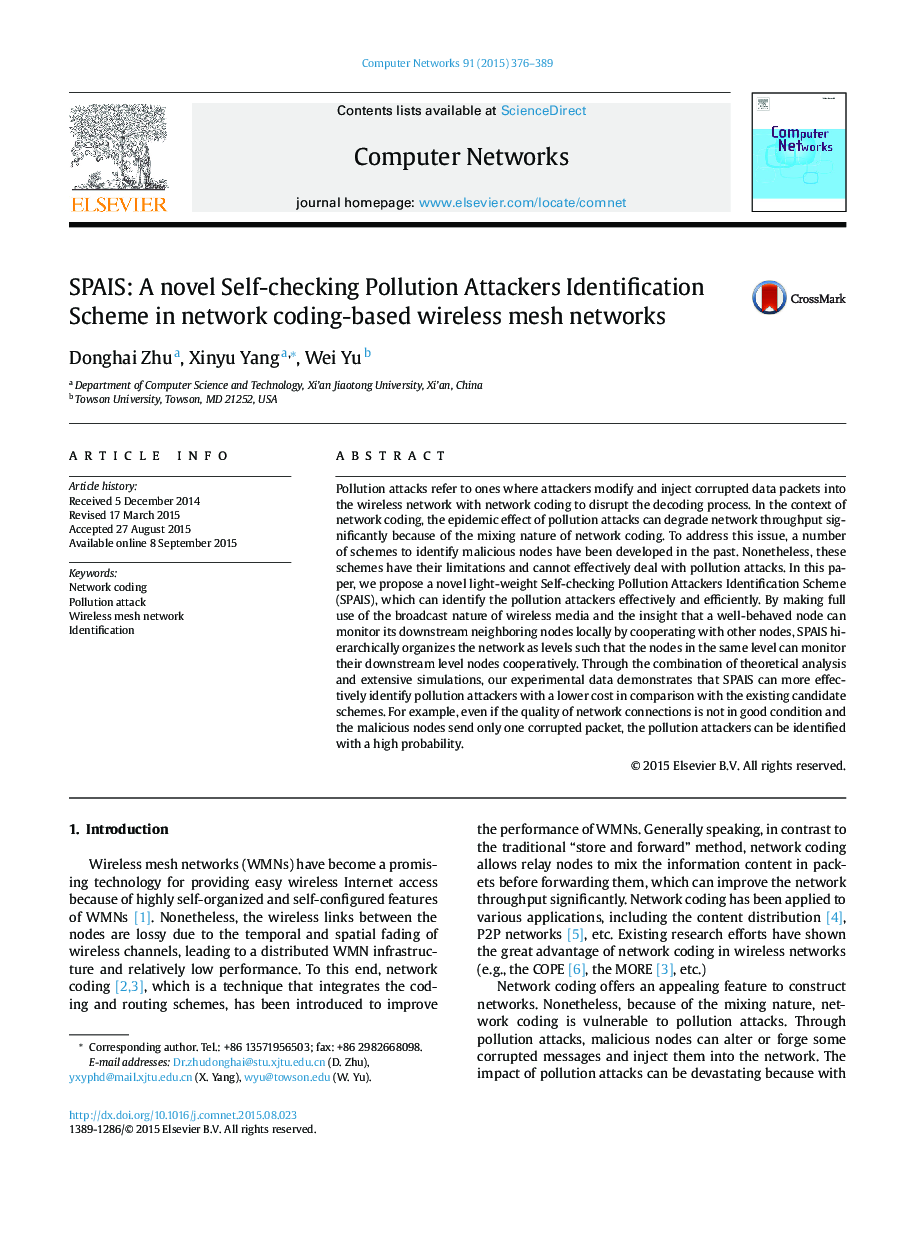| Article ID | Journal | Published Year | Pages | File Type |
|---|---|---|---|---|
| 450711 | Computer Networks | 2015 | 14 Pages |
Pollution attacks refer to ones where attackers modify and inject corrupted data packets into the wireless network with network coding to disrupt the decoding process. In the context of network coding, the epidemic effect of pollution attacks can degrade network throughput significantly because of the mixing nature of network coding. To address this issue, a number of schemes to identify malicious nodes have been developed in the past. Nonetheless, these schemes have their limitations and cannot effectively deal with pollution attacks. In this paper, we propose a novel light-weight Self-checking Pollution Attackers Identification Scheme (SPAIS), which can identify the pollution attackers effectively and efficiently. By making full use of the broadcast nature of wireless media and the insight that a well-behaved node can monitor its downstream neighboring nodes locally by cooperating with other nodes, SPAIS hierarchically organizes the network as levels such that the nodes in the same level can monitor their downstream level nodes cooperatively. Through the combination of theoretical analysis and extensive simulations, our experimental data demonstrates that SPAIS can more effectively identify pollution attackers with a lower cost in comparison with the existing candidate schemes. For example, even if the quality of network connections is not in good condition and the malicious nodes send only one corrupted packet, the pollution attackers can be identified with a high probability.
